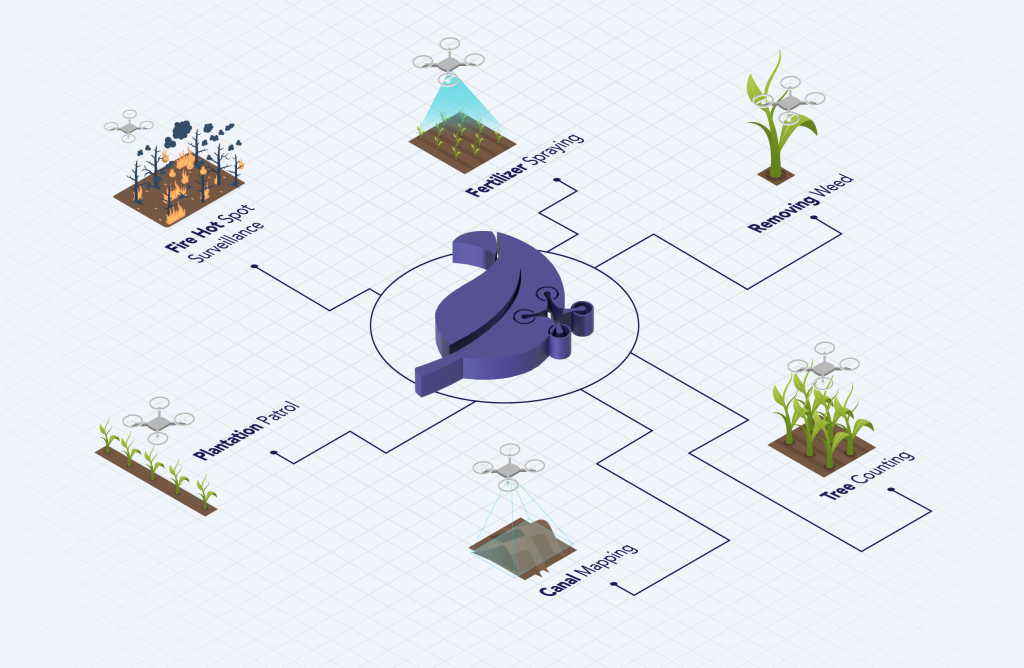Smart farming, also known as precision agriculture, leverages technology to enhance agricultural practices. This includes data analysis, sensors, and automation to boost crop yields and reduce environmental impact. While Asia’s vast and diverse agricultural sector stands to benefit greatly, several critical challenges hinder the widespread adoption of smart farming techniques.
Common Issue Smart Farming In Asia
1. Fragmented Agricultural Landscape
Asia’s agricultural landscape is a patchwork of diversity. From the rice paddies of Southeast Asia to the high-tech greenhouses of Japan, the region’s variety poses significant obstacles. Implementing a uniform approach to smart farming is impractical. Each region’s unique crops, climates, and farming practices require tailored solutions. For example, Indonesia’s rice farming demands different technologies compared to China’s fruit farming. This diversity complicates the deployment of standardized smart farming systems.
2. Small-Scale Farming Dominance
Small-scale, family-owned farms dominate Asia’s agricultural sector. These farmers often lack the financial means to invest in advanced technology. Smart farming tools like agricultural drones, sensors, and automated machinery are expensive. For these small-scale farmers, the initial cost is prohibitive. Additionally, many lack the technical know-how to use these tools effectively, creating a significant barrier to adoption.
3. Inadequate Infrastructure
Many Asian countries suffer from underdeveloped infrastructure. Reliable internet access, essential for smart farming, is often unavailable in rural areas. Poor connectivity prevents farmers from utilizing online platforms and apps that are crucial for precision agriculture. Without this digital backbone, IoT in agriculture and other technologies remain out of reach for many.
4. Insufficient Education and Training
The lack of education and training further impedes the adoption of smart farming. Effective use of smart farming technologies requires an understanding of both traditional practices and modern tech. Many farmers in Asia have limited access to education and are unfamiliar with new technologies. They may be hesitant or unable to adopt these advancements without proper training programs to bridge this knowledge gap.
5. Climate Change Impact
Climate change presents a severe challenge to agriculture globally, and Asia is particularly vulnerable. Unpredictable weather patterns, extreme temperatures, and changing rainfall negatively impact crop yields. While smart farming can mitigate these effects through data-driven predictions and optimized irrigation, implementing these solutions requires substantial investment and robust infrastructure—resources that are often lacking in many regions. Sustainable farming technology is essential to combat these climate-related challenges, but adoption is slow due to the high costs and lack of awareness.
6. Flawed Government Policies and Support
Government policies significantly influence the adoption of smart farming. In many Asian countries, there is a stark absence of support and incentives for farmers to embrace new technologies. Policymakers need to foster an environment that encourages investment in smart farming. This includes subsidies for technology, investment in infrastructure, and support for education and training programs. Without proactive government intervention, the promise of smart farming remains unrealized.
Case Study: Japan’s Leading Example
Japan stands as a beacon of smart farming in Asia, investing heavily in technology to tackle its agricultural challenges. Faced with an aging farming population and limited arable land, Japanese farmers have turned to robotics, AI, and IoT in agriculture. Automated tractors, agricultural drones, and sensors are now commonplace, enabling more efficient land management and increased productivity. Japan’s success illustrates what is possible with the right investment and support.
A notable contributor to this success is Terra Drone, a company founded in 2016 with a mission of “evolving the world from the sky.” Terra Drone is a leader in drone and Urban Air Mobility (UAM) technology. Their indigenous and patented drone surveying and inspection solutions are utilized by the oil and gas, chemical, and construction industries in Japan and abroad. Their systems for unmanned traffic management (UTM) and efficient UAM have been introduced in eight countries around the world. Terra Drone’s achievements earned them the No. 2 spot in the “Top commercial drone service providers ranking 2022” by Drone Industry Insights, a global drone market research organization.

Building on their success in various industries, Terra Drone has expanded into agriculture with their Terra Agri brand. Terra Agri operates in Southeast Asia through Terra Drone Indonesia and Terra Drone Agri in Malaysia. They offer crop monitoring solutions and plantation control systems that monitor site conditions using aerial and ground information, including topography, crop health, soil quality, rainfall, and farm operations activity. Terra Agri is focused on streamlining and digitizing agricultural processes, employing drone technology for efficient spraying and mapping throughout production cycles. By integrating advanced drone technology into agriculture, Terra Agri helps farmers overcome traditional barriers and enhance productivity.
The Future of Smart Farming in Asia
Despite these challenges, the future of smart farming in Asia holds promise. Technological advancements are making smart farming tools more affordable and accessible. Startups and tech companies are developing solutions tailored for small-scale farmers. Innovations like low-cost sensors and mobile apps can help farmers monitor soil health and weather conditions, offering a glimmer of hope. Crop monitoring solutions, precision spraying systems, and smart irrigation systems are becoming more prevalent, helping farmers to optimize water usage and improve crop yields.
However, overcoming these challenges requires a coordinated effort. Governments, private companies, and educational institutions must collaborate to provide the necessary resources and support. Investment in infrastructure, comprehensive education, and targeted training programs are essential. Without such concerted efforts, smart farming will remain an elusive goal for many Asian farmers.
Conclusion
Smart farming has the potential to revolutionize agriculture in Asia by increasing productivity, reducing environmental impact, and helping farmers adapt to climate change. However, the region faces significant barriers that must be addressed urgently. These include a fragmented agricultural landscape, small-scale farming dominance, inadequate infrastructure, insufficient education, climate change impact, and flawed government policies.
Addressing these challenges demands a collaborative approach. Governments, private sector stakeholders, and educational institutions must work together to support farmers. With the right resources and strategic support, smart farming can become a reality, transforming Asia’s agricultural future through precision agriculture, IoT in agriculture, agricultural drones, farm automation, sustainable farming technology, smart irrigation systems, and crop monitoring solutions.

